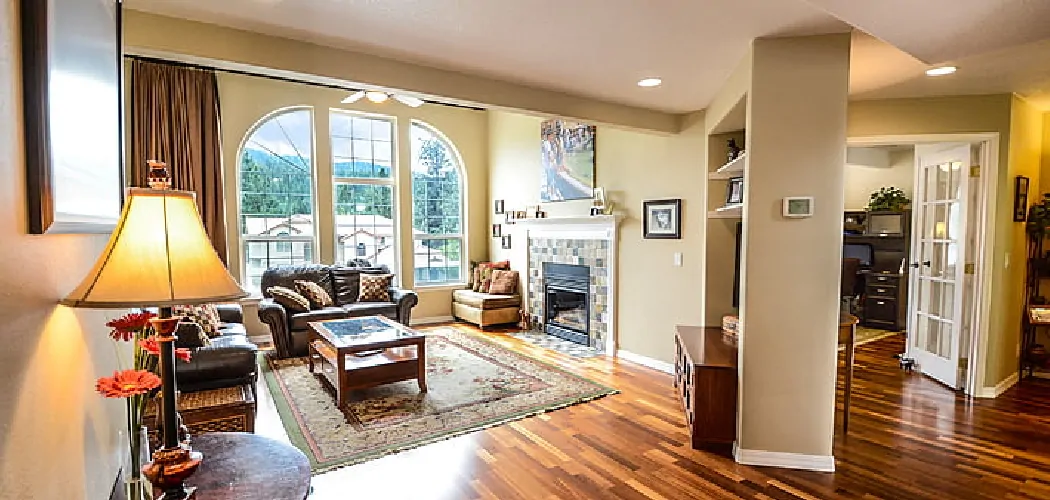Lighting a living room without overhead lighting presents a unique design challenge, but with creativity and strategic planning, it’s entirely possible to create a well-lit and inviting space. In such scenarios, a layered lighting approach becomes paramount, incorporating various light sources to illuminate different areas and tasks effectively.
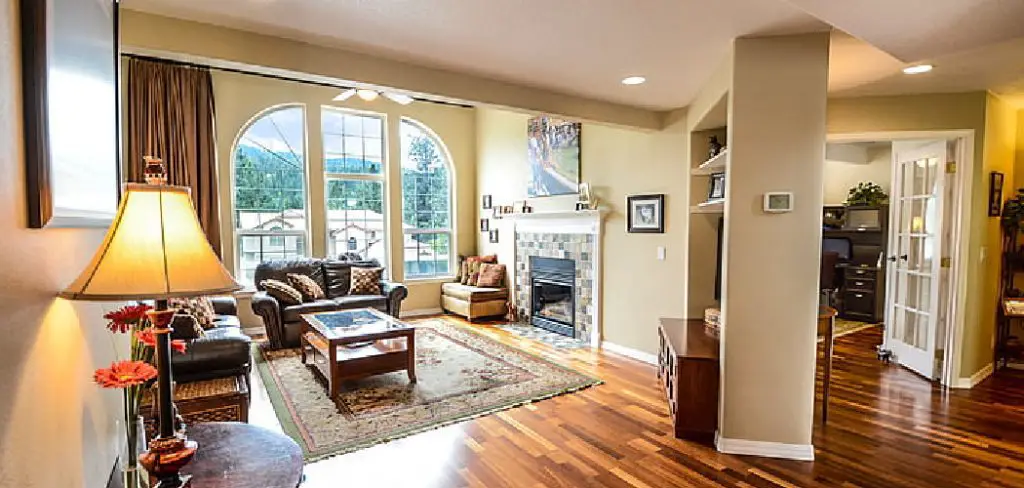
Consider a mix of floor lamps, table lamps, wall sconces, and even string lights to add warmth and ambiance. Task lighting near seating areas for reading or working enhances functionality, while accent lighting highlights artwork or architectural features.
Additionally, utilizing mirrors strategically can help reflect natural or artificial light, making the room feel brighter and more spacious. This article aims to provide a comprehensive guide on how to light a living room with no overhead lighting. By thoughtfully combining different lighting elements, you can transform a living room lacking overhead lighting into a cozy, well-lit oasis tailored to your needs and preferences.
Importance of Adequate Lighting in Living Rooms
Adequate lighting in living rooms is crucial, not just for practical reasons but also for creating an atmosphere that is both welcoming and comfortable. Proper lighting elevates the aesthetic appeal of the space, making it more inviting for residents and guests alike. It plays a pivotal role in defining the room’s ambiance, influencing mood and even the perceived size of the space.
Beyond aesthetics, appropriate lighting levels are essential for day-to-day activities such as reading, socializing, or relaxing, ensuring that these activities can be enjoyed without strain or discomfort. In essence, thoughtfully designed lighting schemes transform living rooms into versatile spaces that adapt to various needs and occasions, enhancing overall quality of life.
Assessing the Living Room Layout and Functionality
Before selecting lighting fixtures, it’s important to evaluate the layout and functionality of your living room. Understanding how the space is used on a daily basis will inform your lighting choices and ensure each area receives appropriate illumination. Consider the placement of furniture, the location of power outlets, and areas of high foot traffic.
Identify key activities that take place in the living room—whether it’s watching TV, reading, playing games, or hosting gatherings. This initial assessment will help you identify where task lighting is needed versus ambient or accent lighting.
Also, take note of any natural light sources, such as windows or glass doors, as these can influence the placement and intensity of artificial lighting needed to complement the daylight. By taking stock of these factors, you can create a lighting plan that enhances the room’s functionality while also creating a warm and welcoming atmosphere.
Understanding the Room’s Purpose
Equally important to assessing the layout and functionality of your living room is understanding its primary purpose. Each household may utilize their living room differently; for some, it’s a formal sitting area primarily used for entertaining guests, while for others, it’s a casual family room for everyday relaxation and activities. This purpose significantly influences the lighting requirements.
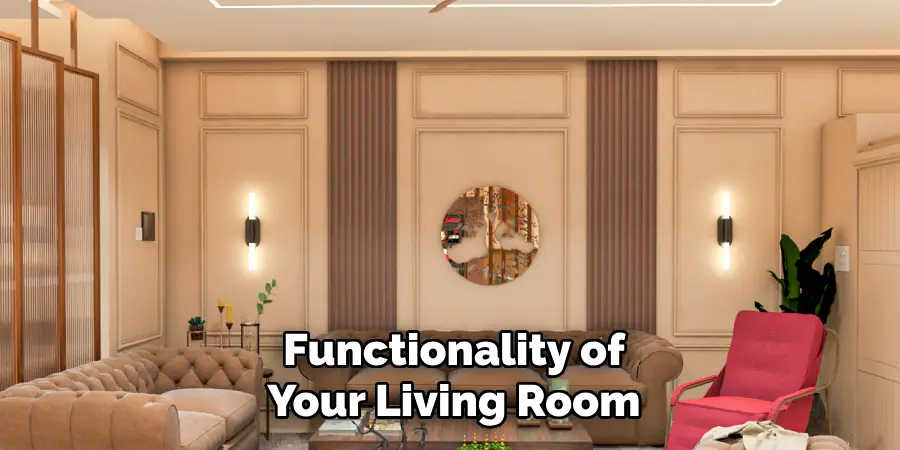
For instance, a living room designated for social gatherings may benefit from vibrant, adjustable lighting options that can be dimmed to create ambiance or lit brightly for festivities.
On the other hand, a living room that serves as a family’s main hub for TV watching and leisure may require lighting that minimizes glare on screens while still providing ample illumination for other activities. Recognizing the primary function of your living room allows you to tailor your lighting setup to meet both the aesthetic and practical needs of your space, ensuring it’s both functional and inviting.
Identifying Key Areas for Lighting
Once you’ve assessed the living room’s layout and understood its primary purpose, the next step is to identify key areas that require specific lighting solutions. Start by pinpointing zones that will benefit most from task lighting, such as reading nooks or areas where hobbies and crafts are pursued. These spots need focused, adjustable lighting options like floor lamps with swing arms or table lamps.
Then, consider areas that would benefit from ambient lighting to create a general sense of warmth and space. This could include the use of floor lamps casting light upwards or strategically placed wall sconces. Accent lighting should also be contemplated to highlight artwork, plants, or unique architectural elements, adding depth and character to the living room.
Additionally, consider paths of travel within the room to ensure they are sufficiently lit to prevent accidents. By methodically identifying these key areas, you ensure every corner of your living room is appropriately illuminated, enhancing both its functionality and aesthetic appeal.
Layered Lighting Approach
A layered lighting approach is essential for a living room without overhead lighting, as it allows for a combination of different lighting sources to work harmoniously, creating a versatile and adaptable space. This approach consists of three main types of lighting: ambient, task, and accent lighting. Ambient lighting serves as the foundation, providing a general level of illumination and ensuring the room is comfortably lit.
Task lighting, as the name suggests, is focused on specific activities and areas where more direct light is necessary, such as reading spots or workspaces. Accent lighting, the final layer, adds depth and dimension to the space, drawing attention to artwork, architectural features, or other points of interest.
By carefully integrating these three types of lighting, you can achieve a balanced, dynamic living environment that can be adjusted to suit any occasion or activity, making your living room a truly multifunctional space.
10 Methods How to Light a Living Room with No Overhead Lighting
1. Floor Lamps:
Floor lamps are versatile lighting fixtures that can provide both ambient and task lighting in a living room without overhead fixtures. Choose floor lamps with adjustable arms or shades to direct light where it’s needed most.
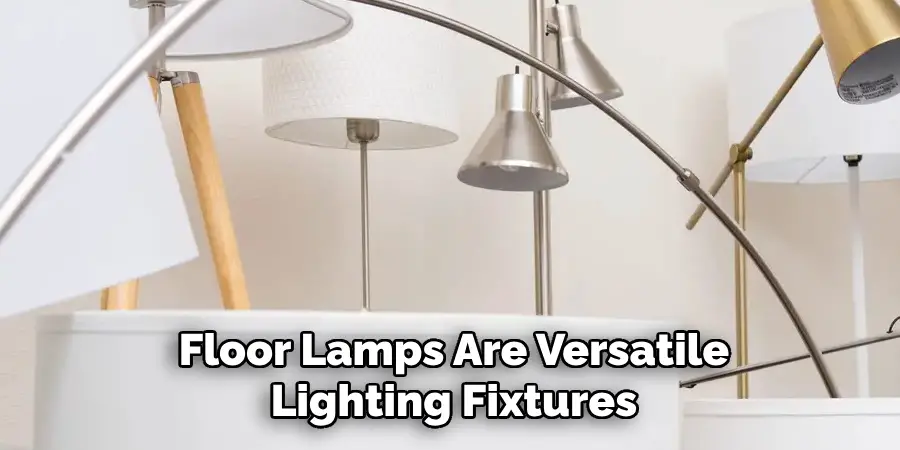
Position floor lamps strategically near seating areas or in corners to distribute light evenly throughout the room. Opt for floor lamps with opaque shades to diffuse light softly for ambient illumination, or choose models with adjustable brightness settings for customizable lighting levels.
One of the main advantages of floor lamps is their flexibility. Unlike fixed overhead lighting, you can easily move a floor lamp from one spot to another depending on your needs. This makes them great for use in different areas of the living room at different times, such as when watching TV or reading a book. Plus, they can be easily relocated to other rooms if needed.
2. Table Lamps:
Table lamps are another essential lighting element for illuminating a living room without overhead lighting. Place table lamps on side tables, console tables, or shelves to provide localized task lighting for reading or working.
Consider lamps with decorative bases or shades to enhance the room’s aesthetic appeal. Mix and match different styles and heights of table lamps to create visual interest and balance in the room. For added flexibility, choose table lamps with dimmable bulbs or adjustable brightness levels to suit various lighting needs and preferences.
When selecting table lamps, keep in mind the overall design and color scheme of your living room. The lamp’s base should complement the surrounding decor, whether it be modern, traditional, or eclectic. Additionally, consider the size and shape of the lamp’s shade to ensure it provides enough light while still fitting in with the room’s style.
3. Wall Sconces:
Wall sconces are ideal for adding ambient or accent lighting to a living room without overhead fixtures. Install wall sconces on either side of doorways, windows, or focal points such as artwork or fireplaces to create visual interest and depth.
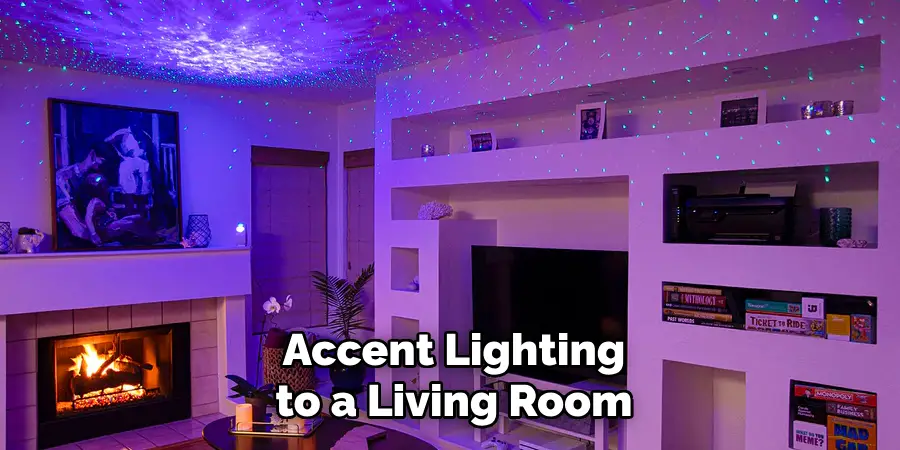
Choose wall sconces with adjustable arms or shades to direct light where it’s needed most. Consider installing wall sconces with dimmable bulbs or integrated dimmer switches to control the intensity of the light and create different moods in the room.
Wall sconces come in a variety of styles and designs to complement any décor. For a traditional or classic look, opt for wall sconces with brass or bronze finishes and intricate details. If you have a modern or contemporary style, choose wall sconces with sleek lines and finishes like chrome or brushed nickel. Additionally, there are many options for different types of wall sconces, such as plug-in, hardwired, or battery operated.
4. Plug-In Pendant Lights:
Plug-in pendant lights offer a convenient and stylish lighting solution for living rooms without overhead fixtures. Hang pendant lights from ceiling hooks or wall-mounted brackets to provide ambient or task lighting in specific areas of the room. Choose plug-in pendant lights with adjustable cords or chains to customize the hanging height and placement.
Opt for pendant lights with decorative shades or diffusers to add visual interest and soften the quality of light. Plug-in pendant lights are easy to install and can be relocated as needed, making them a versatile lighting option for any living room.
In addition to providing practical lighting, plug-in pendant lights can also be used as a design element in the living room. With a variety of styles and designs available, you can choose pendant lights that complement your existing decor or make a statement on their own. From sleek and modern to rustic and vintage, there are plug-in pendant lights to suit any style.
5. Track Lighting:
Track lighting is a flexible lighting solution that can be used to illuminate a living room without overhead fixtures. Install track lighting fixtures on walls or ceilings to provide adjustable ambient, task, or accent lighting. Choose track lighting systems with movable heads or fixtures to direct light precisely where it’s needed. Opt for track lighting kits with dimmable bulbs or integrated dimmer switches to control the brightness and create different lighting effects.

Track lighting is easy to install and can be customized to suit the layout and design of any living room. It also allows for flexibility in terms of rearranging furniture or changing the layout of the room, as the lights can be easily moved and adjusted accordingly.
Additionally, track lighting is a great option for renters who are not allowed to make permanent modifications to their living space. It can be installed without drilling holes or making any other damaging changes to the walls or ceilings.
6. Cove Lighting:
Cove lighting is a subtle and sophisticated lighting technique that can be used to illuminate a living room without overhead fixtures. Install LED light strips or rope lights in recessed or concealed coves along the perimeter of the room to create a soft, indirect glow.
Cove lighting can be used to accentuate architectural features such as crown molding or tray ceilings, or to provide ambient illumination without harsh shadows. Choose LED light strips with adjustable color temperatures or dimming capabilities to create different lighting effects and enhance the overall ambiance of the room.
Additionally, consider installing a smart lighting system that allows you to control the cove lighting with your voice or through a mobile app for added convenience and versatility.
7. Under-Cabinet Lighting:
Under-cabinet lighting is a practical and effective way to add task lighting to a living room without overhead fixtures. Install LED light strips or puck lights underneath cabinets, shelves, or built-in storage units to illuminate work surfaces or display areas.

Choose under-cabinet lighting fixtures with adjustable brightness levels or dimming capabilities to customize the lighting intensity for different tasks or activities. Under-cabinet lighting can also be used to highlight decorative objects or architectural details, adding visual interest and depth to the room. In addition to its functional purposes, under-cabinet lighting can also create a cozy and inviting atmosphere in the living room.
8. String Lights:
String lights are a versatile and affordable lighting option for adding ambiance to a living room without overhead fixtures. Hang string lights along walls, windows, or ceiling beams to create a warm and inviting atmosphere. Choose string lights with LED bulbs for energy efficiency and durability.
Opt for string lights with decorative shapes or colors to complement the room’s decor and style. String lights can be easily installed and removed, making them an ideal temporary lighting solution for special occasions or events. Additionally, string lights can be used outdoors to enhance the beauty of a patio or backyard.
Not only are string lights an excellent option for indoor lighting, but they can also be used in outdoor spaces. Create a cozy and inviting atmosphere on your patio by draping string lights along the railing or hanging them above seating areas.
String lights can also be wrapped around trees or strung across an open space to add a touch of magic to your backyard. For safety, make sure to use outdoor-rated string lights and keep them away from any water sources.
9. Wall Washers:
Wall washers are lighting fixtures designed to wash walls with a broad, even distribution of light, creating a soft and inviting ambiance in a living room without overhead fixtures. Install wall washers on walls or ceilings to illuminate large areas or architectural features such as textured surfaces or artwork.

Choose wall washers with adjustable beam angles or lenses to customize the spread of light and create different lighting effects. Wall washers can be used in combination with other lighting sources to enhance the overall ambiance and visual appeal of the room.
Wall washers come in various types, including LED, halogen, and fluorescent. LED wall washers are the most energy-efficient and long-lasting option, making them a popular choice for both residential and commercial applications. They provide bright, clear light with minimal heat output and can be easily dimmed to create different moods or highlight specific features.
10. Natural Light:
Maximizing natural light is key to lighting a living room without overhead fixtures. Arrange furniture to allow natural light to penetrate deep into the room, and avoid blocking windows with heavy curtains or blinds.
Use sheer curtains or shades to diffuse natural light and reduce glare while maintaining privacy. Consider installing skylights or solar tubes to bring additional natural light into the room from above. Harnessing natural light not only enhances the overall brightness of the living room but also promotes a sense of well-being and connection to the outdoors.
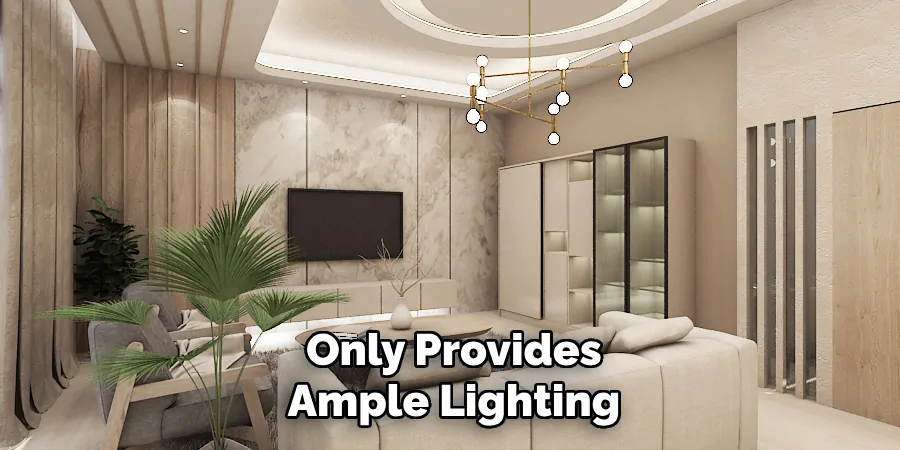
Natural light not only provides ample lighting, but it also has numerous health benefits. Exposure to natural light can improve your mood, strengthen your immune system, and regulate your body’s internal clock. Creating a well-lit living room with natural light can have a positive impact on your physical and mental well-being.
Conclusion
In conclusion, effectively lighting a living room without overhead lighting requires a thoughtful approach that considers both functionality and aesthetics. By employing a layered lighting strategy, incorporating ambient, task, and accent lighting, it’s possible to create a warm and inviting atmosphere while fulfilling practical illumination needs.
Careful selection and placement of fixtures, along with the use of dimmers and smart lighting technology, offer versatility and control over lighting levels to suit various activities and moods. Maximizing natural light through strategic window treatments and furniture arrangement further enhances the room’s brightness and ambiance.
Hopefully, this article gave you some helpful tips about how to light a living room with no overhead lighting successfully, so now that you have the proper knowledge on how to get the job done, why not give it a try today?

